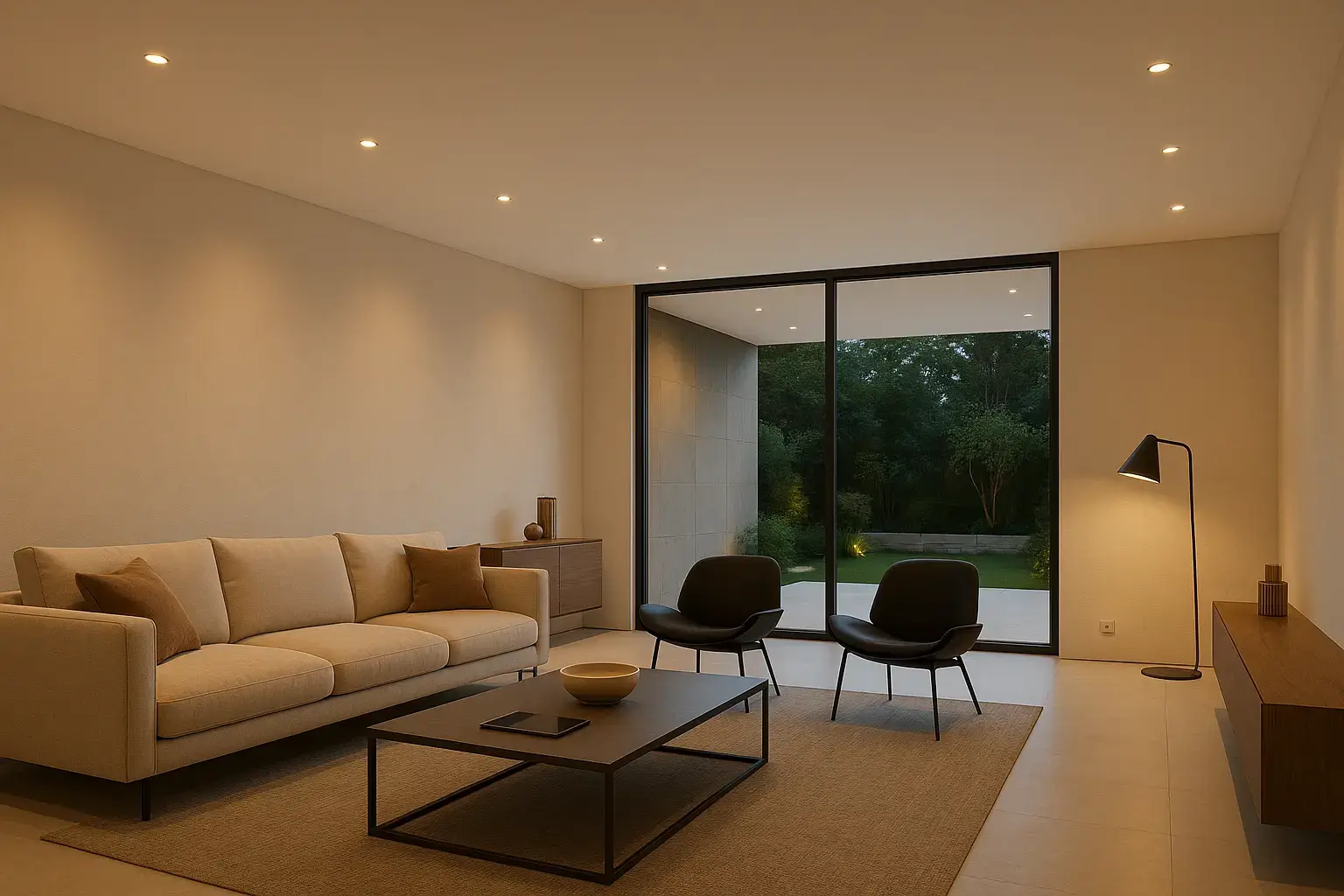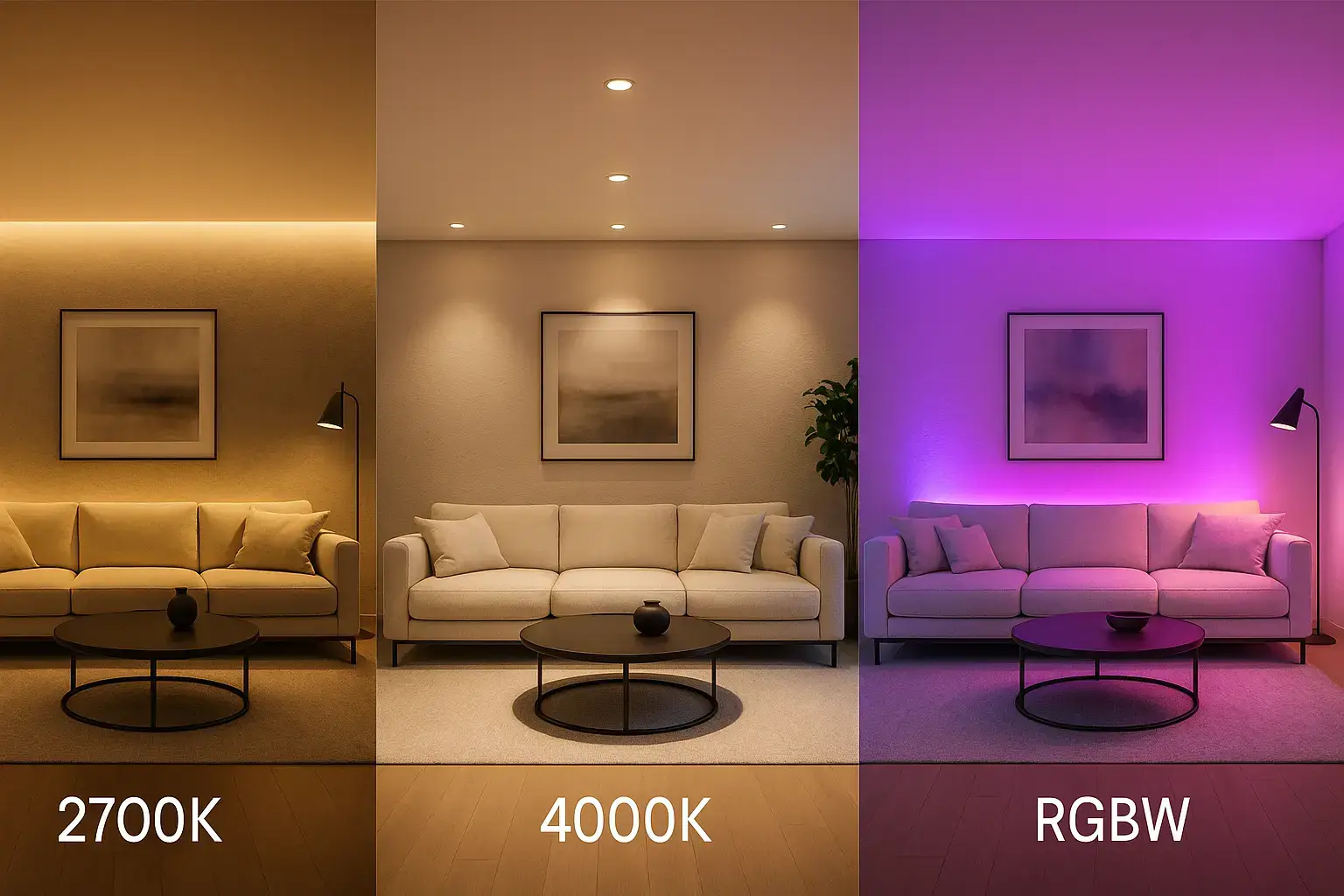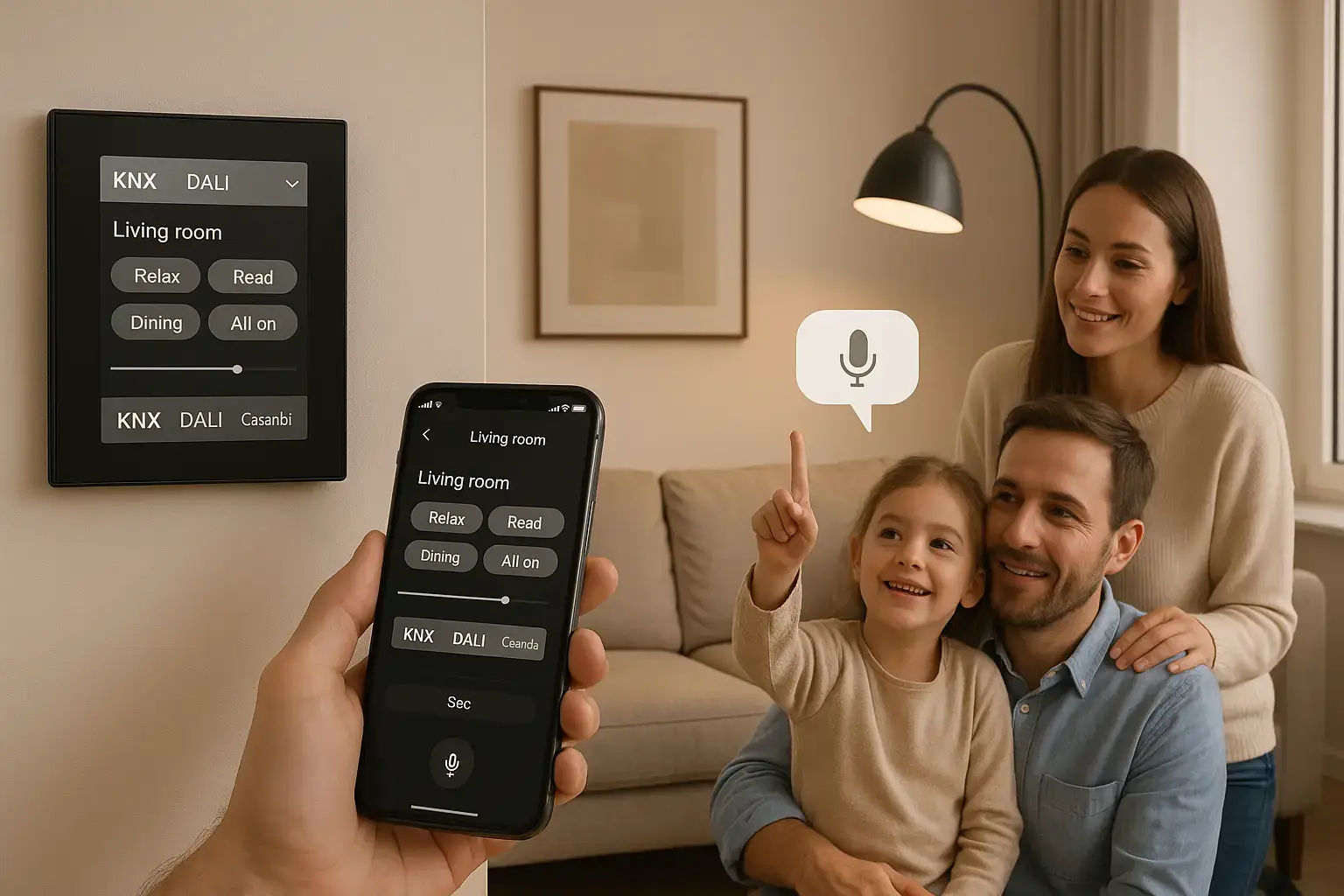One bad downlight can ruin an entire ceiling. Glare, patchy lighting, and endless site delays often come from choosing the wrong product at the wrong time.
The best downlight for modern homes is trimless recessed with CRI 90+ or higher, the right lumen output, flexible beam angles, dim-to-warm or RGBW dimmable LED downlights, smart integration KNX, DALI, Casambi, and full European certification.

I’ve seen far too many projects where lighting was an afterthought. The result? Compromises. Let’s break down the key factors so you can avoid the mistakes.
What Is the Difference Between Trim and Trimless Recessed Downlights?
The ceiling defines the room. The wrong downlight makes even a luxury interior look like an office fit-out.
Trimless recessed downlights give you seamless integration. Trimmed downlights are easier to install and maintain. Both have their place, but they send very different design signals.

Trimmed downlights are quick, practical, and forgiving. They clip into a cut-out with a visible frame. That frame is fine for offices or standard homes. But it breaks the visual flow of a high-end ceiling.
Trimless downlights disappear. They’re plastered into the ceiling so the edge vanishes. In a Munich villa, the client told me: “I don’t want to see the lights, just the light itself.” The final effect was one continuous ceiling surface. The light appeared like it was floating.
The trade-off? Trimless needs early coordination and precise plastering. Try retrofitting later, and you’ll end up with cost, dust, and frustration.
| Type | Look | Maintenance | Best Use Case |
|---|---|---|---|
| Trimmed | Visible edge | Easy | Offices, standard homes |
| Trimless | Seamless, hidden | Harder | Luxury villas, galleries |
How Do Wattage, Lumens, and Beam Angles Affect Downlight Performance?
More watts does not mean more light. That’s one of the most common mistakes.
Choose by lumen output and beam angle, not by wattage. Always look for CRI 90+ to keep interiors looking natural.

In Frankfurt, I saw a contractor use only narrow 15° beam downlights in a large living room. The result looked like stage lighting—harsh cones on the floor. We swapped them for 38° beams, and suddenly the space felt balanced.
Watts measure power, not brightness. Lumens are brightness. Beam angle decides how that brightness spreads. CRI ensures your fabrics, wood, and artwork look alive.
| Factor | Measure | Why It Matters |
|---|---|---|
| Wattage | W | Energy use, not brightness |
| Lumens | lm | Defines brightness |
| Beam Angle | ° | Controls spread and coverage |
| CRI | 90+ | Accurate, natural colors |
Narrow beams for art, wide beams for living areas. Mixing them is the secret to avoiding flat, lifeless lighting.
What Color Temperature and Dimming Options Create the Best Ambience?
Light sets the mood. Get the color wrong, and a bedroom feels like an airport lounge.
For comfort, stay in the 2700K–3000K range. Add tunable white or RGBW dimmable LED downlights if you want flexibility. Dimming must be smooth—flicker destroys ambience.

In Stuttgart, I tested RGBW downlights in a showroom. Warm amber for a cozy dinner, cool white for task lighting, diffuse colors for atmosphere. One fixture, multiple moods.
Bedrooms and lounges thrive at 2700K. Kitchens and workspaces can take 3000–4000K. Smooth dimming is non-negotiable. If the downlight flickers, people notice instantly.
| Option | Effect | Best Application |
|---|---|---|
| 2700K Warm White | Relaxing, cozy | Bedrooms, lounges |
| 3000–4000K | Fresh, alert | Kitchens, offices |
| Tunable White | Flexible, adjustable | Whole-home solutions |
| RGBW | Creative, atmospheric | Smart homes, showrooms |
Lighting is the fastest way to change a room’s emotional temperature.
Which Smart Lighting Protocols Work Best for Modern Homes?
A modern home without smart lighting feels incomplete.
Look for downlights compatible with KNX, DALI, Casambi, or ZigBee. This unlocks app control, scenes, and voice integration.

In Nuremberg, I worked on a home where the client had “dinner,” “cinema,” and “work” scenes, all from one KNX button. DALI-2 handled precise dimming zones. Casambi gave them wireless flexibility. ZigBee connected to consumer apps.
| Protocol | Benefit | Best Use Case |
|---|---|---|
| KNX | Full automation | Villas, penthouses |
| DALI-2 | Precision dimming | Smart homes, offices |
| Casambi | Wireless app control | Retrofits, renovations |
| ZigBee | Easy consumer connection | Hue, Tuya systems |
More buyers now ask if lighting is smart-ready before signing contracts. Integration sells.
What Installation, Maintenance, and Certifications Should I Check Before Buying Downlights?
The best downlight is useless if it slows construction or fails compliance.
Pick fixtures with easy installation, replaceable drivers, and proven certifications CE, RoHS, ENEC certified LED lights.

In Berlin, a site stalled for two weeks because ceiling depth was too shallow for the downlight drivers. The lesson? Always check cut-out size and driver clearance.
Spring clips make installation faster. Replaceable drivers save money long-term. Cheap sealed models often force you to replace the entire fixture if something fails.
Certification is essential: CE and RoHS are mandatory in Europe. ENEC, LVD, and EMC give contractors confidence. Without them, projects risk rejection by inspectors or insurers.
| Factor | Why It Matters | Example Standard |
|---|---|---|
| Installation | Saves time, avoids errors | Spring clips, cut-out size |
| Maintenance | Cuts long-term costs | Replaceable driver |
| Certification | Proves safety and quality | CE, RoHS, ENEC |
Lighting that lacks paperwork is a lawsuit waiting to happen.
Conclusion
The best downlight is seamless in design, strong in performance, adaptive to moods, integrated with smart lighting, and backed by certifications.
Choose early. Choose carefully. A ceiling either tells a story of precision—or a story of shortcuts.
FAQ
Q1: What is the difference between trim and trimless recessed downlights?
Trim downlights have a visible frame that makes installation and maintenance easier. Trimless downlights are plastered in for a seamless look but require early planning and skilled work.
Q2: How do wattage, lumens, and beam angles affect downlight performance?
Wattage measures power use, lumens measure brightness, and beam angle controls how light spreads. Choosing the right mix prevents glare and patchy light.
Q3: What color temperature and dimming options create the best ambience?
Use 2700K–3000K warm light for cozy rooms, 3500–4000K for tasks, and smooth dimming or tunable/RGBW options for flexibility.
Q4: Which smart lighting protocols work best for modern homes?
KNX is ideal for full automation, DALI-2 for precision dimming, Casambi for wireless retrofits, and ZigBee for consumer smart systems.
Q5: What installation, maintenance, and certifications should I check before buying downlights?
Check cut-out size and ceiling depth, choose replaceable drivers, and make sure the fixture has CE, RoHS, and ENEC certifications.

